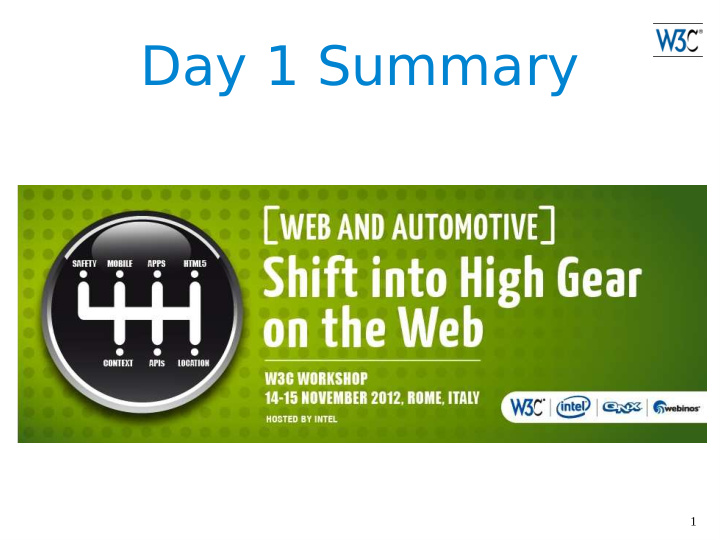



Day 1 Summary 1
Extending the Web Platform to Automotive ● What considerations need to be addressed? ● Safety, liability, legislation, and technical considerations – Situational awareness and safer driving ● Privacy of user data (and shared vehicles) – Authenticating users and cars ● Security and threat models – Permissions and authenticating apps – Implications for enabling differentiated services ● End user vs OEM perspectives – Personal devices and services – Personalization vs branding (UI skins) ● Multi-screen (head-unit, phone, rear-seat, head-up displays) ● Multi-modal (speech, spatial audio, visual, tactile) 2
Further considerations ● Standard Web APIs for access to vehicle systems ● Avoiding market fragmentation through competing solutions ● High enough level to insulate developers from low level variations – Enabling apps to work across different models of cars ● Security considerations ● Different places for apps to execute ● Cloud vs phone vs head-unit vs local server ● Apps you can run when you are away from the car ● Integrating data from different sources ● Avoiding driver distraction ● Context management – Foreground/background – Notifications – Driver alertness ● Application life cycle 3
Effective Standardization ● Ensuring that all stakeholders are involved ● This takes longer, but costs less in long run ● Incremental approach ● Focus on areas where consensus is possible ● Avoid premature standardization ● Best practices ● Across organizations: joint participation + liaisons ● Involvement in multiple working groups – Communicating ideas, use cases, requirements – Sharing best practices for API design 4
Recommend
More recommend